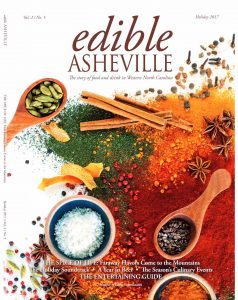How the String Bean Lost its String
BY MARK ESSIG
Would a string bean be a string bean if it had no string?
Such philosophical questions never bothered C.N. Keeney, a New York plant breeder in the late 19th century. At the time, a fibrous thread stretched along the spines of all green beans, requiring cooks to unzip every one. Keeney understood that a stringless string bean would eliminate this tiresome kitchen chore, and selling the seeds for those beans would make him money.
So he set to work.
The plant breeder had to take advantage of “nature’s habit to do some freakish things every little while,” an early chronicler of Keeney’s project explained. Keeney’s job, in other words, was to find the stringless freaks. He planted a large field of Refugee Wax, a popular cultivar. When the beans had ripened, he crept down the rows on his knees, snapping a single bean from each plant. If it had a string, he left it alone and moved on.
He had examined hundreds of plants when, finally, he found the freak he needed. One bean snapped clean, leaving him with two halves and no discernible string. He tied his handkerchief on the plant to mark it and then continued down the rows in search of another. After testing hundreds more plants, he found a second one that produced stringless beans. He tied another handkerchief to that one.
Keeney allowed those two plants to grow to maturity. He harvested their seeds and planted them the next year. After several more years of careful selection, the plants consistently produced stringless beans. Slowy, painstakingly, he had coaxed the tough thread out of the bean’s genetic code.
Keeney took his new bean to market as Keeney’s Stringless Refugee Wax. Eventually he created eight more cultivars, with names like the Stringless Green Refugee, Giant Stringless Green Pod, and Surecrop Stringless Wax. The world rejoiced, and Keeney grew rich.
In urban markets, fresh stringless beans became a mark of sophistication. They were embraced as well by the canning industry, which didn’t want strings snarling the industrial process. Here in Appalachia, the Stokely and Bush companies operated canneries in East Tennessee. In the years before World War II, Johnson County laid claim to the title “Green Bean Capital of the World,” according to Billy Ward, who wrote about the industry in his master’s thesis at Appalachian State University.
Mountain farmers grew stringless beans to sell to the canneries, but they didn’t eat them. “Rural populations continued to favor older, traditional varieties of beans,” Ward wrote. And they were on to something. After all, Keeney spent hours on his knees finding the bean with the least string, not the one with the most flavor.
“Any time you focus on one trait, others get lost,” said Randel Agrella, seed production manager at Baker Creek Heirloom Seeds, a major supplier based in Missouri.
“The string is not as big of a time factor as people have been led to believe,” Agrella said. “You snap off the stem end, and if you do it right the strings come with it.”
Many heirloom varieties sold in and around Asheville, including the greasy, have held onto their strings—and their great taste. “There’s an old mountain saying,” said Shane Maxson, of the Southern Seed Legacy Project. “The string ties in the flavor.”
THE WEEKLY REVEL
Sign up for your free handpicked guide to enjoying life around Asheville.
Available weekly from May to October.




